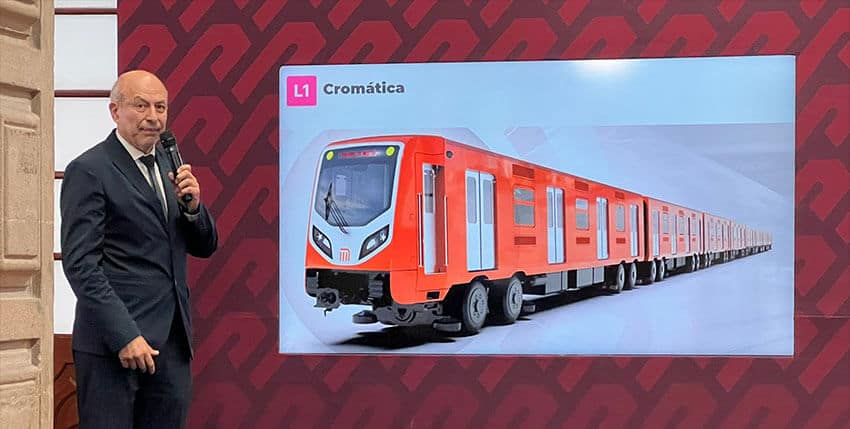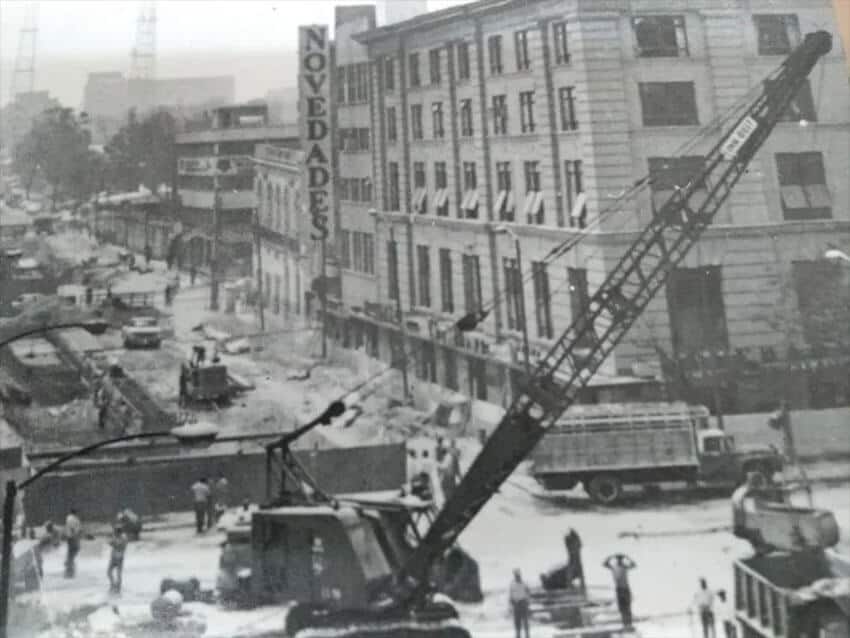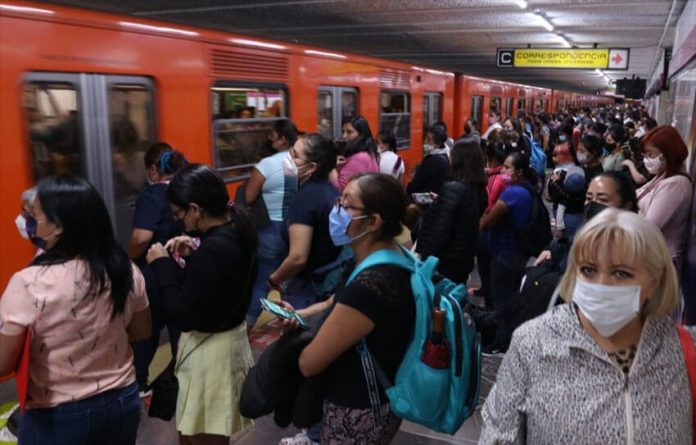A major upgrade to Line 1 of the Mexico City Metro – the system’s oldest and busiest line – will commence next month and keep the 20-station subterranean route partially closed for over a year.
A Mexican subsidiary of Chinese state-owned company CRRC Zhuzhou Locomotive has been contracted to carry out work on Line 1 tracks, trains and communication systems. MEXIRRC has a contract worth 37 billion pesos (US $1.85 billion) to carry out the upgrade and other work over a period of 19 years, the newspaper El Universal reported.
The first stage will start July 9 and is scheduled to conclude next February. The section between Isabel la Católica, a station in the historic center, and Observatorio, on Mexico City’s westside, will be closed for two days in order to isolate it electrically from the other half of the line. The section between Pantitlán, an eastern station where four Metro lines converge, and Salto de Agua, in the historic center, will subsequently close on July 11 and remain shut until February, a period of seven months.
Some 290,000 daily users of the line will be affected by the closure of the section, which includes a station – San Lázaro – at Mexico City’s eastern bus terminal, known as TAPO.

Once work on the Pantitlán-Salto de Agua section is finished, the second stage of the upgrade will begin. Work during that phase will close the stretch between Balderas, a downtown station, and Observatorio – where Mexico City’s western bus terminal is located – until August 2023. Once Line 1 reopens in its entirety, 29 new trains with greater passenger carrying capacity than those currently in use will run along it.
Mexico City Mayor Claudia Sheinbaum told a press conference Monday that the upgrade was necessary. Line 1 was extended in the 1970s and ’80s but no major improvements have been carried out since it opened in 1969.
“We could not do [the upgrade] and leave things as they are but Line 1 of the Metro is 53 years old,” Sheinbaum said.
“A process of renewal should have begun more than 10 years ago but it’s only now that we’re taking the decision to do it. There will be an impact on [Line 1] users, although we’re doing everything we can to minimize it,” she said. “… The fundamental objective is to reduce [safety] risks and deliver a line … that is completely modern,” the mayor said.

Transport Minister Andrés Lajous said 220 city buses will provide transit services between Pantitlán and Salto de Agua while the 12 stations along that section are closed. He said they will have designated lanes to ensure they are not held up by traffic and will run during the same hours the Metro operates – 5:00 a.m. to midnight.
The number of trains operating on lines 5 and 9 will be increased to help compensate for the partial closure of Line 1, and additional buses will run on some existing routes, Lajous said.
Some Line 1 users who spoke with El Universal expressed concerns about the partial closure. Longer commute times, more expensive fares, robberies on buses and dismissals for arriving at work late were among those raised, the newspaper said.
It normally takes Jazmín Ayala 30 minutes to get to San Lázaro from Observatorio but she predicted her commute will take up to an hour once the upgrade begins. The replacement bus services “won’t work because there are so many of use who use the pink line,” she said, referring to Line 1 by its alternate name.
“In addition, the cost will increase,” Ayala said, noting that riding on the Metro – a ticket costs 5 pesos – is cheaper than traveling on buses.
José Paniagua said he had little faith that the closed sections of Line 1 will reopen according to the government’s stated timetable. He noted that President López Obrador promised in June 2021 that Line 12 – on which an accident that claimed the lives of 26 people occurred in May 2021 – would reopen within a year, but that hasn’t happened.
“The government tells lies. It promised that Line 12 would run again and that hasn’t happened. Now I very much doubt that they will comply with the date [they said] the pink line will run again. This [closure] means traffic chaos, travel times doubling and more suffering [for passengers],” Paniagua said.
With reports from El Universal
